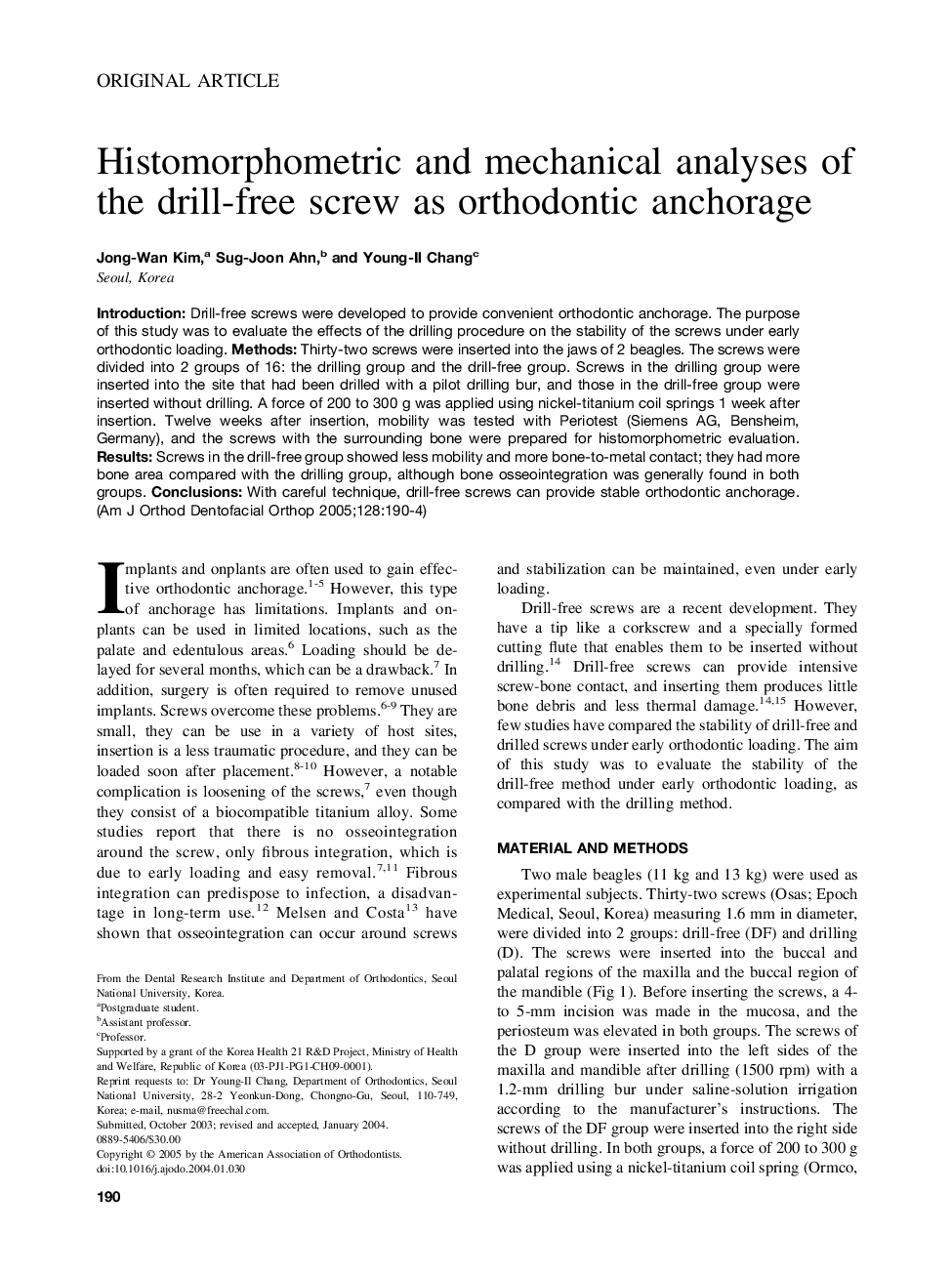| Article ID | Journal | Published Year | Pages | File Type |
|---|---|---|---|---|
| 9992731 | American Journal of Orthodontics and Dentofacial Orthopedics | 2005 | 5 Pages |
Abstract
Introduction: Drill-free screws were developed to provide convenient orthodontic anchorage. The purpose of this study was to evaluate the effects of the drilling procedure on the stability of the screws under early orthodontic loading. Methods: Thirty-two screws were inserted into the jaws of 2 beagles. The screws were divided into 2 groups of 16: the drilling group and the drill-free group. Screws in the drilling group were inserted into the site that had been drilled with a pilot drilling bur, and those in the drill-free group were inserted without drilling. A force of 200 to 300 g was applied using nickel-titanium coil springs 1 week after insertion. Twelve weeks after insertion, mobility was tested with Periotest (Siemens AG, Bensheim, Germany), and the screws with the surrounding bone were prepared for histomorphometric evaluation. Results: Screws in the drill-free group showed less mobility and more bone-to-metal contact; they had more bone area compared with the drilling group, although bone osseointegration was generally found in both groups. Conclusions: With careful technique, drill-free screws can provide stable orthodontic anchorage.
Related Topics
Health Sciences
Medicine and Dentistry
Dentistry, Oral Surgery and Medicine
Authors
Jong-Wan Kim, Sug-Joon Ahn, Young-Il Chang,
